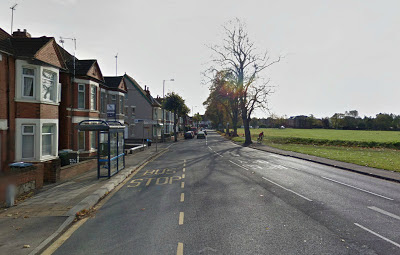So Miss E Hubbard is one of the few cyclists who rides along the Sowe Valley footpath properly.
Good for her. However, that does not negate those who are utterly self-centred and who expect pedestrians to get out of their way.
I have experienced the situation where I had stopped to watch some small birds in a bush when a cyclist came to stop just behind me screaming at me to “blank blank” get out of his way.
As for her complaints about other things, I actually agree with her but that was not the subject of my original complaint which was the loss of our country stroll along the Sowe Valley footpath.
There is no doubt in my mind that this amenity will be lost to many of us that the council has stolen it from us to give to the cyclists.
Miss Hubbard states that the council gave us the chance to complain about the proposal to execute this change.
Where was this opportunity offered? In some cycling club? I certainly did not see any offer anywhere where I could raise an objection and I doubt that many other walkers did either. She claims that I raise my objections only through the Telegraph.
True, but has she tried going through the council? Brick wall comes to mind because I have often tried in the past, until I realised that that was a total waste of time.
I disagree with her that this amenity should be enjoyed by all in the manner she suggests. It was created for walkers and should remain as such and not be disrupted by those who want it for other purposes, including riding at speed past the wildlife, which I and others enjoy watching, which then flies or runs away.
A reply from F Jennings was published on 6 June:
Mr Hancock tells us he is disgusted at the action of the council in constructing a cycle track.
He says the council should consider everybody when making decisions like this.
This is exactly what they have done!
Not everyone can run a car, some use public transport, the other option is to
cycle.
To cycle in Coventry is taking risks. Too many roads and pavements are disaster
areas.
I think the council should be congratulated, not condemned.
The way the economy is going many more people will consider cycling. The
minimum bus fare is now £1.80. This cycle track will not solve all our problems,
but it will help.
I used to work with Councillor Arthur Waugh senior,and I could see the way our
streets were changing. I asked him for his opinion,he said would you buy a horse
if you did not have a stable?
Mr Hancock lives in Sewall Highway. In April 2008 this street was full pageI might add that I find it difficult to understand how widening the footpath to 3 metres would increase the problem of cyclists and pedestrians getting in each other's way. Still long term readers of the Coventry Telegraph are familiar with Mr. Hancock's strange logic.
headline news, highlighting an illegal parking marton the pavement. I do not
remember him complaining.






